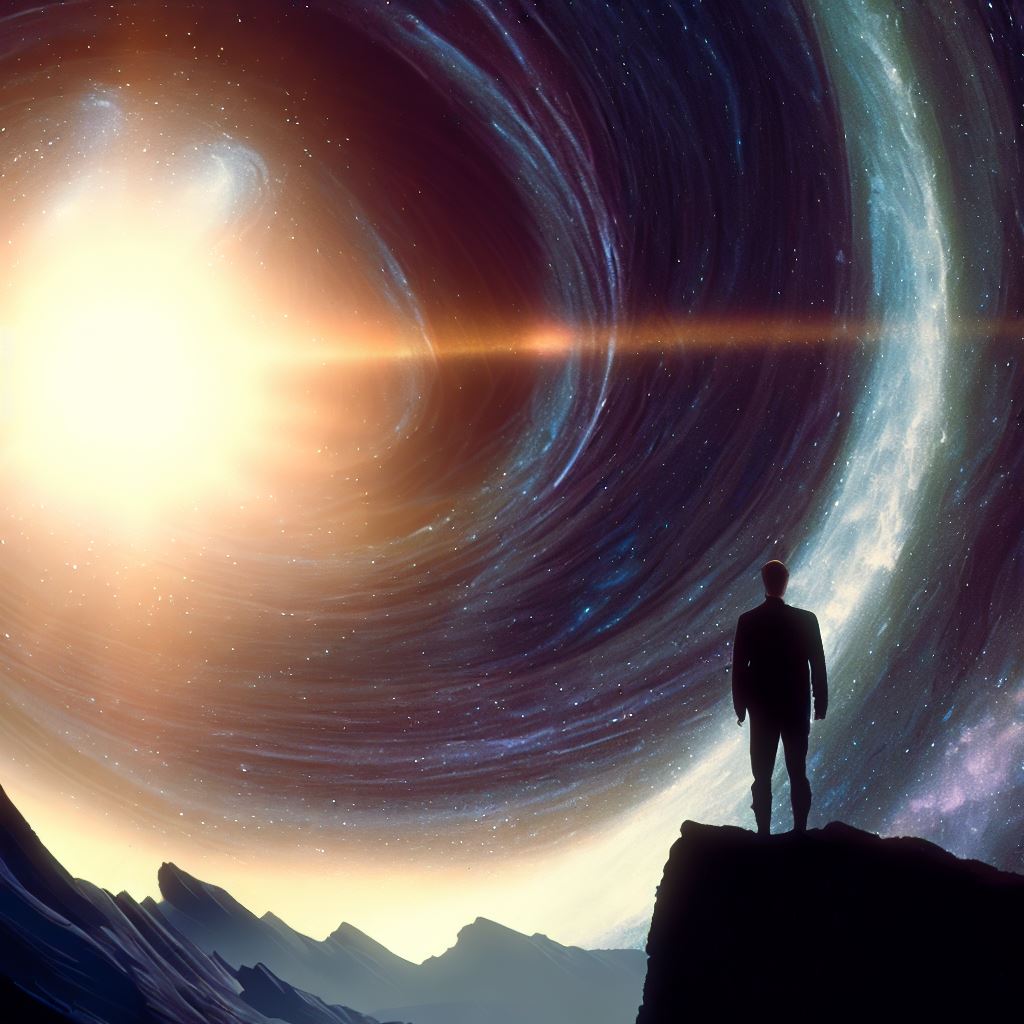Chapter 3
Mind is like the void in which there is no confusion or evil, as when the sun wheels through it shining upon the four corners of the world. For, when the sun rises and illuminates the whole earth, the void gains not in brilliance; and, when the sun sets, the void does not darken. The phenomena of light and dark alternate with each other, but the nature of the void remains unchanged.
That is how this chapter opens. I put that passage into Bing’s AI image generator, and the image accompanying this post is what popped out. I just thought we could use a little color in this community.
Huang Po goes on to use this metaphor to compare our conceptions of enlightened beings and ordinary sentient beings, the former being viewed as light and the latter dark. This view is itself driven by attachment, as there is nothing else but the one mind, which I suppose is the void in this metaphor.
If you students of the Way do not awake to this Mind substance, you will overlay Mind with conceptual thought, you will seek the Buddha outside yourselves, and you will remain attached to forms, pious practices and so on, all of which are harmful and not at all the way to supreme knowledge.
My interpretation is that Huang Po’s one mind is the same as emptiness. I asked the Bing chatbot which seems to confirm my interpretation:
The void that Huang Po refers to is the concept of śūnyatā in Sanskrit, which means emptiness or voidness.
Granted, what does AI know? But it’s hard not to interpret void as emptiness, and then Huang Po goes on the equate this with the one mind.
Huang Po again warns against attachments to particular practices or teachings (going so far as to call them “harmful” this time), which again reminds me of the Heart Sutra:
There is neither ignorance nor Extinction of ignorance… neither old age and death, nor Extinction of old age and death; no suffering, no cause, no cessation, no path; no knowledge and no attainment. With nothing to attain, a bodhisattva relies on prajna parami ta, and thus the mind is without hindrance. Without hindrance, there is no fear. Far beyond all inverted views, one realizes nirvana.
My interpretation is that Huang Po would have his students focus on understanding emptiness. Maybe I’m biased in my interpretation as this has been the focus of my practice as of late.
